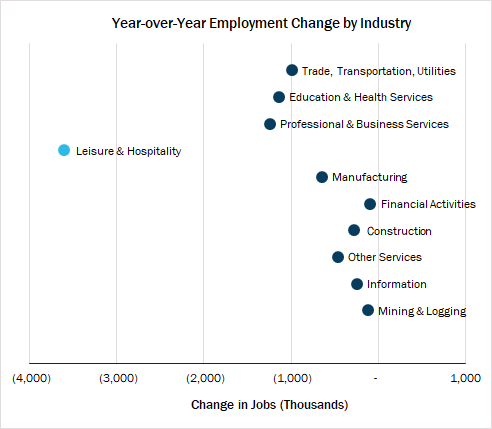Q3 2020 Commentary
by Boston Trust Walden
October 12, 2020

Financial Markets
The public health crisis continues on, but, so too, has the stock market’s rise. The S&P 500 Index added almost nine percentage points of total return during the quarter, bringing the year-to-date return well into positive territory. Gains would have been even more pronounced had the Index not retreated from the all-time highs set in early September. A resurgence of the virus, the lower likelihood of near-term additional fiscal assistance from Congress, and election season uncertainty are all plausible culprits for the reduced enthusiasm for equities in the final weeks of the quarter. Regardless, the stock market’s gains have been impressive given the deep economic downturn and the upheaval to virtually everyone’s personal life. With large capitalization stocks again leading the way, market dynamics have remained reasonably consistent throughout the recovery. The S&P 500 outpaced the smaller capitalization Russell 2000® Index by four percentage points during the quarter and now stands 14 percentage points better year-to-date. In turn, large caps were again led by mega caps – mostly of the higher growth variety. During the quarter, the 20 largest companies accounted for roughly half of the Index’s gains.
Interest rates remain at historically low levels. Given the Federal Reserve’s announced intention to keep the policy rate they set near zero through 2023, we expect most short-term borrowing rates to remain low for the foreseeable future. Long-term government bond rates are also unlikely to move much higher. Though the Fed has less direct control over yields on longer-dated bonds, the central bank’s bond buying program, combined with economic uncertainty and still-low inflation expectations, creates a governor on longer rates. Indeed, interest rates held steady during the quarter despite the improvement in the economy. The primary bond indices therefore added only marginally to their positive year-to-date returns.
Investment Perspectives
The stock market has recouped its pandemic-induced losses and then some. But to anyone observing activity in their community or beyond, it’s clear that the broader economy has not exhibited the same V-shaped recovery as stocks. Why the disparity? Much of it has to do with differing compositions of the stock market versus the overall economy. For example, five technology-related behemoths2Apple, Microsoft, Amazon.com, Alphabet (Google), and Facebook comprise nearly a quarter of the S&P 500 Index and have led it higher. They account for a far smaller slice of overall economic activity. Conversely, the Index lacks substantial representation from businesses that make up significant portions of the economy and continue to languish.
The labor market helps illustrate this story. As of the end of September, private nonfarm employment was 119.9 million, a 6.8% drop from a year prior and a reflection of the ongoing economic hardship. Though the labor market is healthier than during the worst of the shutdowns earlier this year, its improvement has slowed in recent months and might stall without additional fiscal support. Nevertheless, half of the jobs lost in the recession have indeed been recovered. The rebound has not been even across industries. In fact, over 40% of the 8.8 million reduction in private payrolls has been borne by a single industry: Leisure & Hospitality. The US Bureau of Labor Statistics includes restaurants and bars, as well as hotels, sporting/gambling venues, museums, and other recreational institutions in this group. Given ongoing virus-related activity restrictions, it’s unsurprising this industry has endured an outsized portion of employment losses. A year ago, workers in this group comprised 13% of the total private workforce. Strikingly, the corollary grouping accounts for less than two percent of the broad stock market’s total value. In other words, this economic pain is being felt acutely by a significant portion of the American workforce and economy overall, but it has not created nearly so great a challenge for the companies that comprise the major stock indices.

Data as of September 2020. Seasonally adjusted figures. Displayed in descending order by industry size (September 2019). Source: Federal Reserve Bank of St. Louis.
From One Pocket to Another
A similar phenomenon has manifested in spending patterns. Aggregate consumer spending was down by just two percent in August versus the year-earlier period. But the shifts among types of expenditures are telling. For example, spending on food overall is relatively flat, but where those dollars are spent has meaningfully shifted from restaurants to grocery-type stores. Spending on Transportation Services, which includes everything from air travel to mass transit and taxi/ridesharing, is down by 25% versus last year. Similarly, outlays for Recreation Services (e.g., club memberships, sporting events, museums, and other admissions) are down by 30%. The reduction would be more drastic were it not for home services that fall under the same heading, e.g., a 20% increase in spending on video/audio streaming services. The new “everything-at-home” pandemic lifestyle has served to increase spending on computers, tablets, and software and related accessories by roughly 20% as well.
These trends have hastened already divergent paths for many industries and individual stocks. Recipients of such increased spending have seen improvement in their sales and profit trajectories, including the aforementioned tech behemoths. Combined with lower interest rates that increase the relative value of strong future earnings streams, it’s reasonable that these firms have led the Index higher. At the same time, other industries’ earnings have disproportionately suffered. An estimated full quarter of the decline in aggregate second quarter S&P 500 earnings were borne solely by airlines and other travel-related firms. While one might expect that to drag down the returns of the Index, it’s worth noting that the entire airline industry comprises just 0.2% of the Index value.
While the shift in consumption explains some of the recent market dynamics, a rebound in aggregate spending as well as for those hard-hit industries remains integral to the longer-term health of the economy. On this score, it is possible that additional fiscal support from a still deadlocked Congress will be necessary to provide the bridge to a more broad-based and sustainable economic recovery, one that includes a medical solution to the public health crisis.
Election Season
Though it may seem like we have been in a perpetual election cycle for the last four years, the traditional presidential election season is now finally upon us. We won’t offer a prediction about the election’s outcome, though we continue to monitor the myriad polls and reports from statisticians interpreting the resulting data. While stocks will no doubt react to the ultimate tally in the presidential and Senate votes, current market valuations clearly incorporate a range of the most likely election outcome scenarios. That stocks have maintained their momentum as former Vice President Biden opened a sizeable lead in national and battleground state polls makes clear that investors don’t anticipate a Biden victory would trigger a swoon in corporate profits or stock prices. To be sure, President Trump’s reelection wouldn’t necessarily precipitate that, either. With still a few weeks to go until Election Day, and possibly additional time before we have a definitive result, these dynamics could change meaningfully. Accordingly, the impending election brings another considerable element of uncertainty and volatility to a market already buffeted by the path of the virus.
While we will have to wait for the election’s results, it is not too early to think about potential policy changes should there be a change in power. Among the initiatives we have considered are tax policy changes for both corporations and individuals. Importantly, while Vice President Biden’s proposals are clear directionally and offer many specifics, converting them from policy to law is no sure thing. That likely depends on Biden: 1) Winning the presidency; 2) Democrats retaining/winning control over both houses of Congress; and 3) Democrats abolishing the Senate filibuster to enable passing of his policies. Other areas we are monitoring include regulatory initiatives, stances on anti-trust enforcement, and health care policy, among others. All bear watching as any of these could have far reaching consequences for significant portions of the economy and/or markets.
Portfolio Positioning
Our frequent emphasis on the uncertainty generated by the pandemic and national politics might imply that we don’t favor owning stocks. That is not the case. Given historically low interest rates and in consideration of the composition of the market (and the corporate profits thereof), we don’t believe that stocks, in aggregate, are overvalued. While there are many pockets of the market that are trading at valuations that, in our view, imply an unsustainable level of future growth, there are also, we believe, ample opportunities for sound investment. Given the uncertainties, we are as focused as ever on adhering to our long-held discipline of identifying companies with sustainable business models, financially strong underpinnings, and reasonable valuations, all in the context of prudent portfolio diversification. In addition to generating attractive long-term returns, we believe this approach will continue to provide a modicum of stability in an environment of financial market volatility with an abundance of short-term risks.
At the same time, today’s low interest rate environment means that the fixed income portion of portfolios is likely to produce modest returns in the coming years, thus limiting the total return expectations for well-diversified multi-asset and balanced portfolios. But bonds still have an important role in portfolio construction. As we have often stated, the high quality issues we seek offer a ballast to portfolio values in times of uncertainty. Given the economic and geopolitical backdrop, it’s unsurprising that the price of such “portfolio insurance” has gone up. Despite the price (and notwithstanding our efforts to seek incremental returns), we continue to believe that this insurance is a necessary tool in striking a proper balance between risk and return in the context of individual client goals.
Boston Trust Walden Company is a Massachusetts-chartered bank and trust company. Past performance is not indicative of future results. Data Sources: Bloomberg, FactSet financial data and analytics, FTSE Russell, MSCI, Standard & Poor’s. The information presented should not be considered as an offer, investment advice, or a recommendation to buy or sell any particular security. The information presented has been prepared from sources and data we believe to be reliable, but we make no guarantee to its adequacy, accuracy, timeliness or completeness. Opinions expressed herein are subject to change without notice or obligation to update.
About Boston Trust Walden Company
We are an independent, employee-owned firm providing investment management services to institutional investors and private wealth clients.



